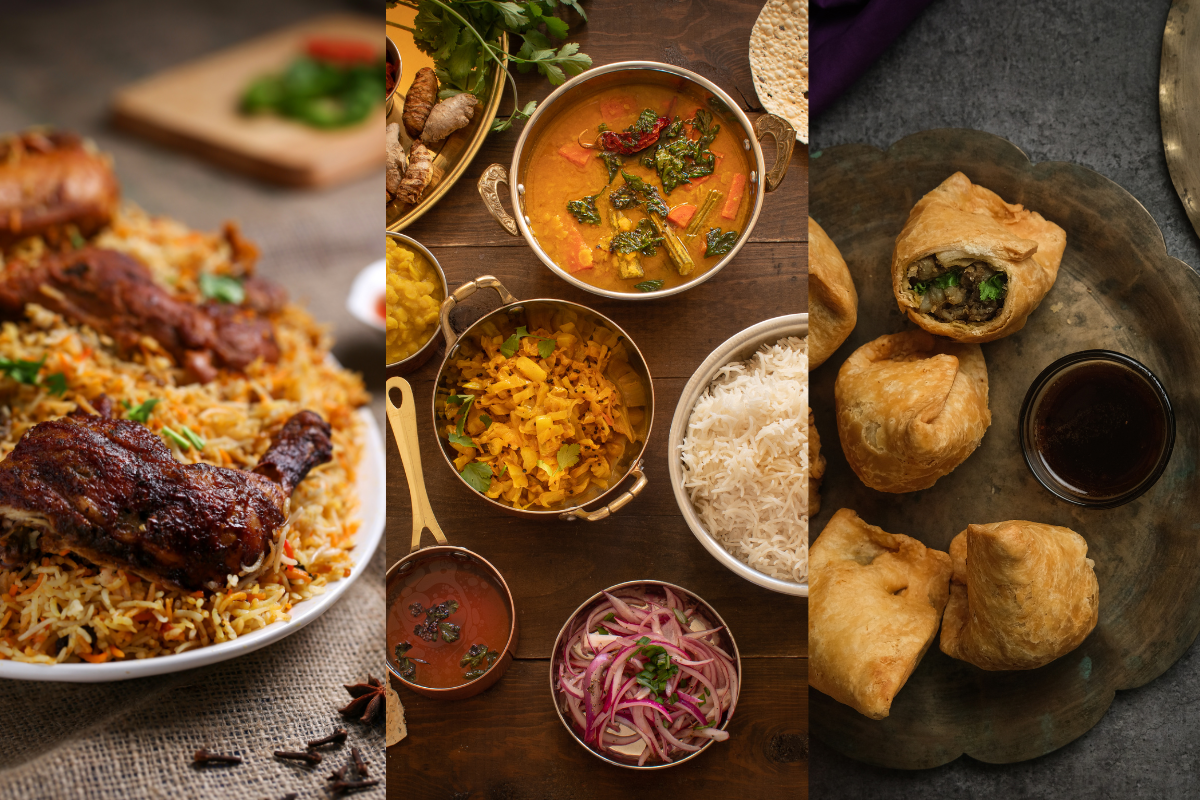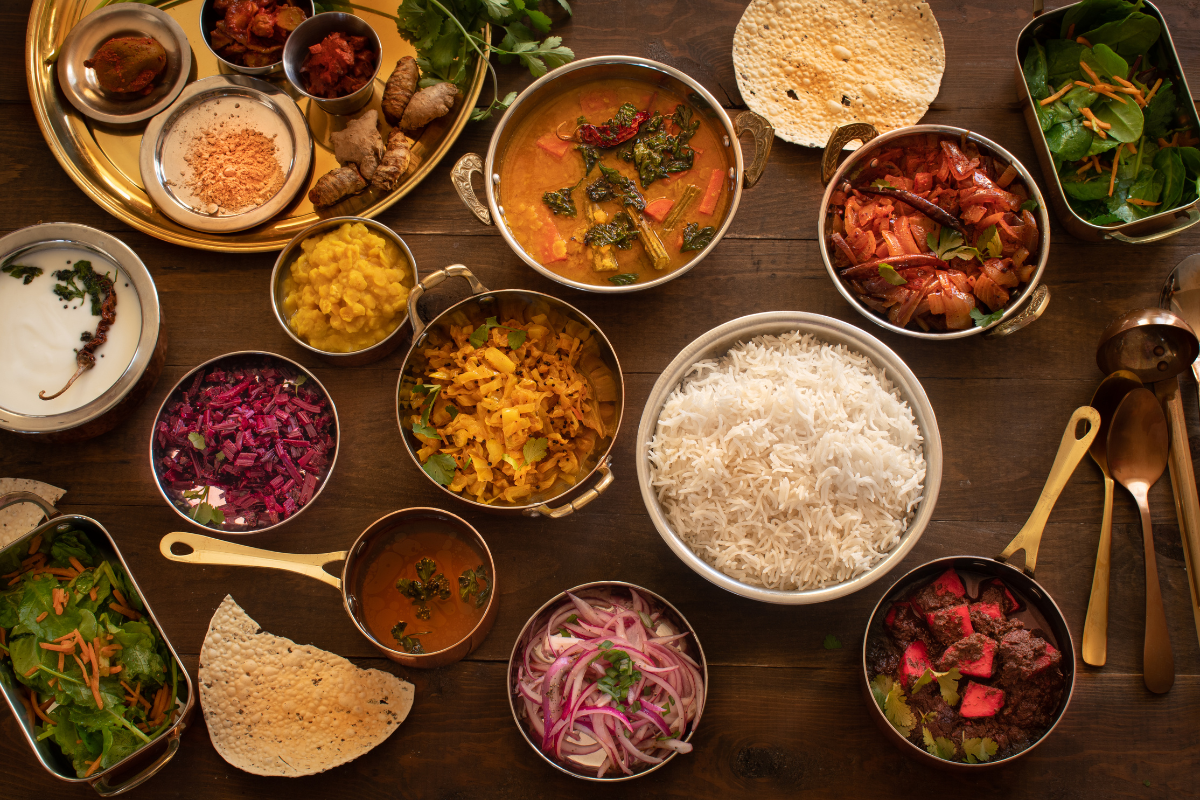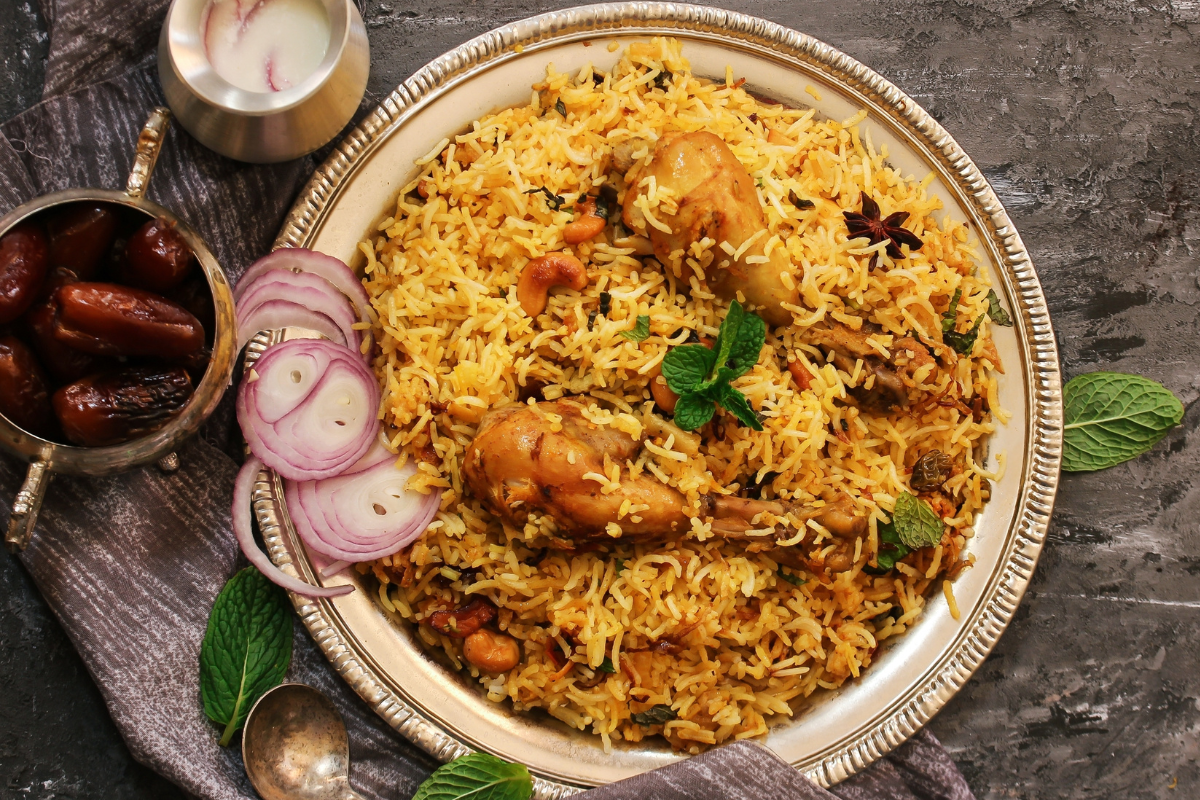Join us in this monumental journey of the Indian cuisine as we complete 75 years of Independence
An audacious attempt at decoding history that encapsulates the imperial trajectory of the evolution witnessed in the culinary realm of India;

Much has been written, discussed, and critiqued about Indian cuisine over the years, both locally and internationally. Multiple stories, articles, and excerpts spread across the length and breadth of the internet tell us the innumerable times imminent personalities have gathered at food conferences (or otherwise) to discuss the socio-political implications and impact of the same. However much we'd like to disassociate food from politics and ward it off as a matter of personal preference, we cannot possibly deny the ripple-effect one minuscule difference in food habit and/or choice can create for years to come. What marked the genesis of this pathway 6000 years ago (as is recorded) with the Aryans traversing the borders of our homeland to an elaborate array of fusion treats and dishes beyond the stereotype of chai-tea-latte, curry and tikka-masala have been nothing short of fascinating. An interesting deep dive into the macrocosm of daal-chawal, roti-sabzi and more, this narrative just keeps getting richer by the day, one bite at a time.
This story is a foolhardy endeavour to epitomise thousands of years' worth of history that have encountered dramatic, larger-than-life narratives to give birth to its present shape as we experience it today!

Popular for its dateless ayurvedic traditions, India has been the hub of an extensive plethora of spices and herbs for as long as we can remember, owing to the varying climatic and agricultural conditions dotting the periphery of the country. India has taken pride in growing varieties of the world's spices for centuries which contributes to a whopping 75% of the global production currently. As old as human civilization, Indian spices have found their mention in the Vedas which speaks volumes about the brains behind developing the authentic recipes, responsible for the famous taste and healing properties that our dishes continue to serve relentlessly irrespective of your geographical location. The spices that distinguish an original dish from its trial counterparts played an important role in the ancient and medieval ages to dominate the economic conditions of the nation which naturally led to the 200 years of colonization by the British, Portuguese and French, each of who fought for autonomy over this industry. This brings us to an engaging turn in India's food expedition discourse.
The advent of The East India Company and the establishment of British rule confirmed that our luxuriant dishes, promising an exciting range of flavours with each morsel, would now need to take a back seat. Maneuvering each preparation in a way that would suit their taste buds the best, we limited the use of our spices, thus birthing a whole new set of eatables that we had to acclimatise ourselves with. This phase substantiated the use of more aromatic herbs and spices which resulted in a steep decline of flavours marking a consequential dent in its originality. However, we must give credit where it's due, they did affect our journey in a certain way that proved to be unfavourable at the moment but beneficial in the long run. It got us into the habit of using cauliflower, spinach, cabbage, and carrots in our cooking habits. The huge craze of pav-bhaji that we share today finds its roots in the influence of Portuguese culture. They introduced us to the very prevalent approach of using wine and vinegar and the regulars like tomato, potato, and chilli in our dishes. A major influence of these cooking habits is still reflected in Goan cuisine.

How can we possibly be talking about the diversified nature of Indian cuisine without any mention of the high and mighty influence of the Mughals? Or, simply put, the root source of our widely celebrated love for biryani, phirni, shahi tukda, kebabs, and more (the list is non-exhaustive, at least on an emotional level). Synonymous with all things grand, Mughlai cuisine introduced to us and ingrained the effortless use of rich, decadent flavours within our system. The generous use of pista, badam, kishmish (pistachio, almonds, and raisins respectively) in their dishes or even the incorporation of milk, yoghurt, cream (malai) to meliorate the curries scream lavish, elaborate, and enriched in every language that there is. Indulgent in nature this cuisine is also glorified for its spice-heavy desserts which popularised the use of saffron (kesar), cardamom (elaichi), and cinnamon (dalchini) in several dimensions possible, be it kesar-doodh, shahi-halwa, sheer khurma or anjeer ka halwa, you name it, they have it.
Traversing centuries' worth of history as we finally arrive at what the distinguished Indian cuisine has taken the form of, I believe it'll only be safe to say, the horizons only seem to continually expand. More so now than ever with the heavy influence of several cuisines that has birthed an immaculate blend of tastes and flavours. Breaking new ground with recipes that transcend beyond borders (of any and every sort) our kitchens have been more open to the idea of experimenting with our desi chicken curry and tacos, a very traditional milkshake with gulkand in it, or a kachori with cheese and jalapeno stuffing in it. Modern times are witnessing a whole lot of openness in terms of being more accepting of experimentation that involves the amalgamation of ideas driven by the only fuel of concocting never-seen-before recipes. The current culinary premise is home to an ever-growing cafe culture that is determined to bring to life cross-border experiences, here within our homeland, restaurants and recipes are achieving worldwide recognition and putting the Indian platter on the global dining landscape.
While a webpage may fall short when it comes to penning down the entire journey of Indian cuisine as we know it today, I hope this will give you an inkling regarding the leaps and bounds your favourite dish had to make to reach you, at this exact point in time.

